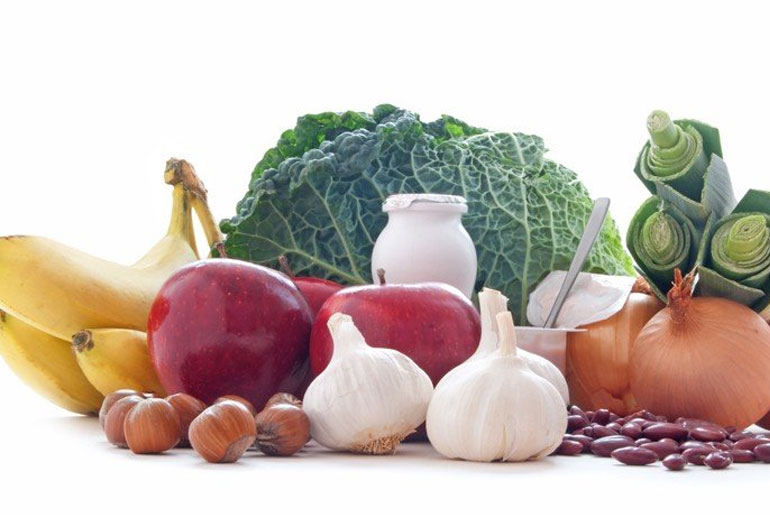Introduction
Prebiotic-rich foods are a group of dietary sources that contain non-digestible fibers, such as inulin and fructooligosaccharides (FOS). These fibers are not broken down in the upper digestive tract but instead reach the colon intact, where they act as food for beneficial gut bacteria. By promoting the growth and activity of these beneficial bacteria, prebiotics play a crucial role in supporting a healthy gut microbiome.
Incorporating prebiotic-rich foods into your diet can help improve gut health, enhance digestion, and support overall well-being. However, it’s essential to introduce these foods gradually, especially if you’re not accustomed to consuming high-fiber items, to avoid potential digestive discomfort. Combining prebiotic-rich foods with probiotic sources like yogurt, kefir, sauerkraut, and kimchi can further promote a balanced and healthy gut microbiome. As with any significant dietary changes, consulting with a healthcare professional or a registered dietitian is recommended, especially if you have specific health concerns or conditions.
Improving gut health is essential for overall well-being, and incorporating prebiotic-rich foods into your diet can play a significant role in achieving that. Prebiotics are non-digestible fibers that stimulate the growth and activity of beneficial bacteria in the gut, supporting a healthy digestive system. Here are five top prebiotic-rich foods you can include in your diet:
-
Chicory Root:
Chicory root is one of the best prebiotic-rich foods. It contains a soluble fiber called inulin, which serves as food for beneficial gut bacteria. Chicory root can be consumed as a tea, added to coffee, or used as a supplement.
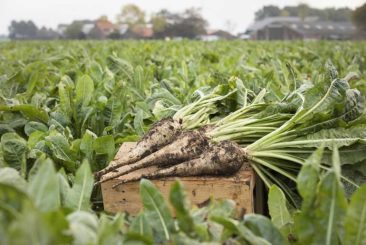
Chicory root refers to the taproot of the chicory plant (Cichorium intybus), which is a herbaceous plant belonging to the daisy family (Asteraceae). The chicory plant is native to Europe, but it is now grown and cultivated in various parts of the world. Chicory has been used for culinary, medicinal, and commercial purposes for centuries.
Culinary Uses:
- Coffee Substitute: Roasted and ground chicory root has been used as a coffee substitute or coffee additive, particularly during times when coffee was scarce or expensive. It has a somewhat similar taste to coffee and can be blended with coffee or brewed alone.
- Leafy Greens: The green leaves of chicory are often used as a salad green, and there are various varieties of chicory cultivated for their leaves, such as radicchio and endive.
- Culinary Additive: In some culinary traditions, chicory root is used as a flavoring agent or additive in certain foods and beverages.
Medicinal Uses:
- Digestive Aid: Chicory root has been traditionally used to promote digestion and stimulate appetite.
- Prebiotic Properties: Chicory root contains a type of fiber known as inulin, which acts as a prebiotic. Prebiotics are non-digestible food components that support the growth of beneficial gut bacteria, promoting gut health.
- Liver Health: Some herbal medicine traditions utilize chicory root to support liver health and promote detoxification.
Commercial Uses:
- Inulin Extraction: Inulin extracted from chicory root is utilized in the food industry as a natural sweetener and a dietary fiber supplement.
- Feed for Livestock: Chicory root is used as feed for livestock, as it is a good source of nutrition and has positive effects on the health and productivity of animals.
It is important that while chicory root has several potential health benefits, it may not be suitable for everyone. Some individuals may experience digestive discomfort or allergic reactions to chicory root. As with any herbal remedy or dietary supplement, it’s essential to consult with a healthcare professional before using chicory root for medicinal purposes, especially if you have any existing health conditions or are taking medications.
-
Garlic:
Garlic not only adds flavor to your dishes but also provides prebiotic benefits. It contains a prebiotic fiber called inulin, which helps promote the growth of healthy gut bacteria. Using fresh garlic in your cooking is an excellent way to incorporate it into your diet.
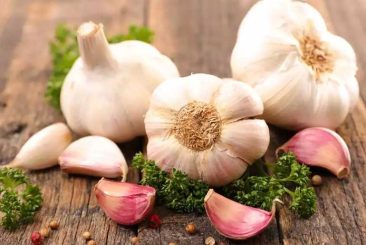
Garlic (Allium sativum) is a popular and pungent bulbous plant that belongs to the Allium family, which also includes onions, shallots, and leeks. It has been used for culinary and medicinal purposes for thousands of years. The bulb, which consists of multiple individual cloves, is the most commonly used part of the plant. Here are some key aspects of garlic:
Culinary Uses:
- Flavor Enhancer: Garlic is widely used in cooking to add a strong and distinctive flavor to various dishes. It is a fundamental ingredient in many cuisines around the world, including Mediterranean, Asian, and Middle Eastern cuisines.
- Versatile Ingredient: Garlic can be used fresh, minced, crushed, or sliced. It can be added to soups, stews, sauces, marinades, dressings, and virtually any savory dish.
- Roasted Garlic: Roasting garlic brings out a sweeter and milder flavor, making it a popular spread for bread or a complement to roasted vegetables and meats.
Medicinal Uses:
- Health Benefits: Garlic has been recognized for its potential health benefits. It contains various compounds, including allicin, which have antioxidant and anti-inflammatory properties.
- Cardiovascular Health: Studies suggest that garlic may help lower blood pressure and reduce cholesterol levels, thus contributing to heart health.
- Immune System Support: Garlic is believed to have immune-boosting properties that can help the body fight off infections and illnesses.
- Antimicrobial Properties: Allicin in garlic has been shown to have natural antimicrobial properties, making it effective against certain bacteria and fungi.
Other Uses:
- Pest Repellent: Garlic is sometimes used as a natural insect repellent to deter pests in gardens.
- Traditional Medicine: Garlic has been used in traditional medicine systems like Ayurveda and Traditional Chinese Medicine for various purposes, such as treating colds, coughs, and digestive issues.
It’s important that while garlic has many potential health benefits, it may interact with certain medications or cause allergic reactions in some individuals. As with any supplement or herbal remedy, it’s best to consult with a healthcare professional before using garlic for medicinal purposes, especially if you are on medications or have specific health conditions. Additionally, excessive consumption of garlic may cause digestive discomfort in some people.
-
Onions:
Onions are another prebiotic-rich foods that can be easily included in various dishes. They contain a type of fiber called fructooligosaccharides (FOS), which supports the growth of beneficial gut bacteria.
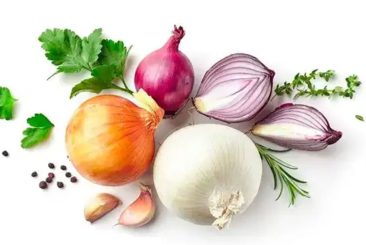
Onions (Allium cepa) are a versatile and widely used vegetable that belongs to the Allium family, just like garlic. They are known for their pungent flavor and distinctive aroma. Onions come in various sizes, colors, and shapes, and they are an essential ingredient in many cuisines around the world. Here are some key aspects of onions:
Culinary Uses:
- Flavor Base: Onions are commonly used as a flavor base in countless dishes, providing a savory and aromatic foundation for soups, stews, sauces, and many other recipes.
- Sautéed and Caramelized: Onions can be sautéed until translucent or caramelized to enhance their sweetness, making them a delicious addition to various savory dishes.
- Raw in Salads: Some varieties of onions, such as red onions and scallions, are often used raw in salads, salsas, and as garnishes to add a crunchy texture and tangy flavor.
- Pickled: Onions can be pickled to create tangy and slightly sweet condiments that complement various dishes.
Medicinal Uses:
- Health Benefits: Onions, like garlic, contain various bioactive compounds that offer potential health benefits.
- Antioxidant Properties: Onions are rich in antioxidants, such as quercetin, which may help protect the body from oxidative stress and inflammation.
- Cardiovascular Health: Some studies suggest that regular consumption of onions may contribute to heart health by improving cholesterol levels and reducing blood pressure.
- Immune Support: Onions are believed to have immune-boosting properties due to their content of vitamins and minerals.
Other Uses:
- Traditional Medicine: Onions have been used in traditional medicine for their potential medicinal properties, including as a remedy for coughs, colds, and digestive issues.
- Insect Repellent: Like garlic, onions have insect-repellent properties and are sometimes used to deter pests in gardens.
Onions are generally safe to consume for most people and can be a valuable addition to a balanced and varied diet. However, some individuals may experience digestive discomfort or allergic reactions to onions, especially when consumed in large quantities. If you have specific health conditions or concerns, it’s a good idea to consult with a healthcare professional or a registered dietitian before making significant changes to your diet involving onions or any other food.
-
Asparagus:
Asparagus is a delicious vegetable and one of the Prebiotic-Rich Foods like inulin and FOS. Adding asparagus to your meals not only provides prebiotic benefits but also offers essential vitamins and minerals.
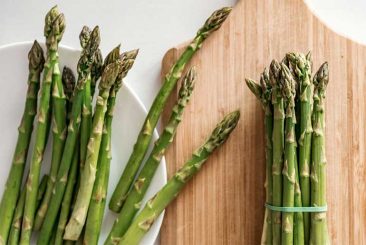
Asparagus (Asparagus officinalis) is a nutritious and delicious vegetable that belongs to the Asparagaceae family. It is native to Europe but is now cultivated in various parts of the world. Asparagus has been enjoyed for its unique taste and culinary versatility for centuries. Here are some key aspects of asparagus:
Culinary Uses:
- Flavor and Texture: Asparagus has a distinct and slightly sweet flavor, with a tender and fibrous texture. It can be enjoyed both cooked and raw, though cooking helps to soften the fibrous texture.
- Boiled or Steamed: Boiling or steaming is a common way to cook asparagus, which helps retain its nutrients and vibrant green color.
- Grilled or Roasted: Grilling or roasting asparagus adds a slightly smoky flavor and a crisp texture, making it a popular method of preparation.
- Stir-frying: Asparagus can also be stir-fried with other vegetables or used in Asian-style dishes.
- Asparagus Spears: The tender young shoots of asparagus are typically the most desirable part of the plant and are the edible portion.
Nutritional Benefits: Asparagus is not only delicious but also packed with essential nutrients, including:
- Vitamins: Asparagus is a good source of vitamins A, C, E, and K, as well as B-complex vitamins like folate (vitamin B9).
- Minerals: It contains minerals such as potassium, phosphorus, magnesium, and calcium.
- Dietary Fiber: Asparagus is rich in dietary fiber, which supports digestive health.
- Antioxidants: Asparagus contains various antioxidants, including vitamins C and E and flavonoids, which help protect the body from oxidative stress and inflammation.
Health Benefits:
- Digestive Health: Asparagus’s high fiber content promotes regular bowel movements and supports a healthy digestive system.
- Antioxidant Properties: The antioxidants in asparagus contribute to overall health and may help reduce the risk of chronic diseases.
- Diuretic Effect: Asparagus has a mild diuretic effect, meaning it may help promote urine production and aid in flushing out excess fluids from the body.
Asparagus is a low-calorie vegetable and can be a valuable addition to a balanced and nutritious diet. When selecting asparagus, look for firm and bright green spears with closed, compact tips. To store, wrap the cut ends in a damp paper towel and keep them in the refrigerator. Asparagus is best enjoyed fresh, but it can also be frozen for later use.
-
Bananas:
Bananas are a convenient and one of the Prebiotic-Rich Foods. They contain a type of prebiotic fiber called resistant starch, which supports the growth of beneficial gut bacteria. As bananas ripen, their resistant starch content increases, making them even more beneficial for gut health.

Bananas (Musa acuminata and Musa balbisiana) are one of the most popular and widely consumed fruits worldwide. They belong to the Musaceae family and are native to Southeast Asia. Bananas are not only delicious but also highly nutritious, making them a favorite snack and ingredient in various dishes. Here are some key aspects of bananas:
Nutritional Content: Bananas are a rich source of essential nutrients, including:
- Carbohydrates: Bananas are primarily composed of carbohydrates, mainly in the form of natural sugars, particularly glucose, fructose, and sucrose. This is what gives bananas their sweet taste and energy-boosting properties.
- Dietary Fiber: Bananas are a good source of dietary fiber, including both soluble and insoluble fibers. Fiber supports digestive health and can help regulate bowel movements.
- Vitamins: Bananas are a good source of several vitamins, including vitamin C, vitamin B6, and small amounts of other B-vitamins like thiamine (B1) and riboflavin (B2).
- Minerals: They contain essential minerals such as potassium, magnesium, and manganese.
Health Benefits:
- Energy Boost: The natural sugars in bananas, along with their fiber content, make them a quick and convenient source of energy, making them an excellent snack option.
- Heart Health: Bananas are rich in potassium, which is essential for heart health. Potassium helps regulate blood pressure and supports proper heart function.
- Digestive Health: The fiber in bananas aids digestion and helps maintain regular bowel movements, promoting a healthy digestive system.
- Nutrient Absorption: The vitamin C in bananas aids in the absorption of iron from plant-based foods, making them beneficial for individuals with iron-deficiency anemia.
- Exercise Recovery: Bananas are a popular choice for post-workout snacks due to their combination of carbohydrates and potassium, which can help replenish glycogen stores and electrolytes lost during exercise.
Uses:
- Fresh Consumption: Bananas are commonly eaten fresh, either as a standalone snack or sliced into cereal, oatmeal, or yogurt.
- Smoothies and Shakes: They are a popular ingredient in smoothies and shakes, adding natural sweetness and creaminess.
- Baking: Ripe bananas are often used in baking to add moisture and natural sweetness to muffins, cakes, and bread.
- Drying and Dehydrating: Bananas can be dehydrated to make banana chips, a popular dried fruit snack.
Bananas are generally safe for most people to consume, but some individuals with specific health conditions, such as diabetes or latex allergies, may need to moderate their intake or consult with a healthcare professional. Additionally, the nutritional content of bananas changes as they ripen, with riper bananas being sweeter and having higher sugar content.
Conclusion:
Incorporating these prebiotic-rich foods into your daily diet can have a positive impact on your gut health. Remember to start gradually if you’re new to consuming these foods, as a sudden increase in fiber intake may cause digestive discomfort for some people. Along with prebiotic-rich foods, consider including probiotic foods (foods containing live beneficial bacteria) like yogurt, kefir, sauerkraut, and kimchi to further support a healthy gut microbiome. As always, if you have any specific health conditions or concerns, it’s best to consult with a healthcare professional or a registered dietitian before making significant changes to your diet.
Disclaimer:
The information contained in this article is for educational and informational purposes only and is not intended as a health advice. We would ask you to consult a qualified professional or medical expert to gain additional knowledge before you choose to consume any product or perform any exercise.

